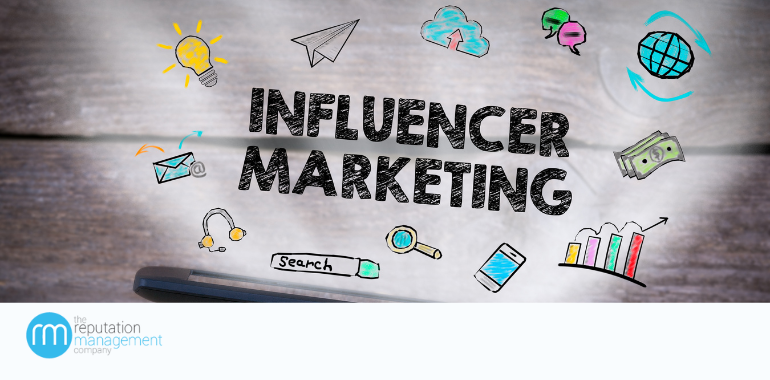Strategic Influencer Marketing: Boosting Engagement and Impact
Have you ever noticed one of your favorite internet celebrities promoting a certain good or service? In that case, you have encountered influencer marketing. Influencers are people with a sizable online following who have the power to sway the beliefs or actions of their followers, frequently via social media platforms.
The involvement of these influencers has changed the marketing and advertising game in today’s digital age. What was formerly dominated by billboards and television advertisements has changed to Instagram postings, YouTube videos, or Twitter tweets. Our increasing reliance on social media, which makes these platforms effective tools for businesses, plays a big part in this transformation.
We shall delve into the fascinating area of influencer marketing in this essay. We will look at the many types of influencers, how businesses may use them for their success, how an online presence can be used to influence, and what the future holds for this type of marketing. Let’s examine how online influence affects our purchasing behavior and how companies sell their goods and services.
Having a Strong Online Presence
The internet is filled with many enterprises, like a bustling city center. An engaging shop in this metropolis is comparable to an online presence. It refers to an individual or company’s existence in digital channels, such as websites, social media, and email. A solid online presence has become essential for both individuals and organizations.
In the past, having an online presence was limited to maintaining a basic website or, at most, a Facebook page. Today, however, it calls for regular audience engagement, being visible and active across a number of digital channels, and vigilantly observing and enhancing your online profile. This greater visibility can raise brand recognition, encourage trust, and boost influence.
Therefore, how does online presence become influential? In essence, influence is the capacity to mold the beliefs, emotions, or behaviors of another. This corresponds to your ability to frequently generate online involvement, such as likes, shares, comments, and purchases. Individuals or companies may turn their internet presence into a real impact by continuously producing interesting, valuable content and cultivating close bonds with their fans. The decision-making of their audience is guided by this form of influence, which also directly affects sales and trends.
Influencer marketing rise
 The emergence of social media has sparked a new wave of change: influencer marketing. Just as television and radio once transformed how companies sold their products, so has influencer marketing. This type of marketing emerged with the birth of social media, and it has grown quickly due to its effectiveness and reach.
The emergence of social media has sparked a new wave of change: influencer marketing. Just as television and radio once transformed how companies sold their products, so has influencer marketing. This type of marketing emerged with the birth of social media, and it has grown quickly due to its effectiveness and reach.
It entails collaborating with people with a sizable online following for influencer marketing. By endorsing or supporting a good or service, these people, also known as influencers, have the extraordinary capacity to influence the purchasing decisions of their followers. Comparatively speaking, this style of marketing is far more direct and individualized.
Influencer marketing’s success has been well-documented. According to a survey by the Influencer Marketing Hub, businesses are making $5.20 for every $1 spent on influencer marketing. These figures highlight the growing significance of influencers in organizations’ marketing strategies.
Understanding the Various Influencers
Influencers come in various forms and sizes, and it’s important to recognize these variations when choosing someone to team up with for your marketing initiatives. The four major categories divide influencers: celebrity, macro, micro, and nano.
Nano-Influencers have fewer than 1,000 followers, yet their smaller following should not be taken advantage of. Since their audience perceives them as authentic and sympathetic, their recommendations can significantly impact them. They frequently have a very close-knit online group.
Micro-Influencers have a fan base of 1,000–100,000 people. Like Nano-influencers, their followers often see them as trustworthy and genuine. Micro-influencers frequently specialize in a particular niche, which makes them perfect for specialized marketing initiatives.
Macro-influencers have a larger audience because they have between 100,000 and 1 million followers. They frequently cover a wider range of material, and their support can greatly increase a brand’s awareness.
Celebrity influencers frequently have millions of followers. People often consider movie stars, well-known athletes, and even well-known internet personas as celebrity influencers. However, despite their massive following, their recommendations may not always be taken seriously.
The requirements and goals of your brand will determine the best influencer to use. A Nano or Micro-influencer can be ideal for reaching a smaller, more attentive audience. A macro or celebrity influencer might be better appropriate if you’re looking for widespread attention.
selecting the appropriate influencer
Making the best choice for your brand’s influencer requires carefully evaluating many variables. Audience alignment is one of the first things to take into account. Your chosen influencer’s followers should closely reflect your target market’s demographics regarding age, location, gender, and interests.
The influencer’s ideals and how they live up to them are equally essential. A successful partnership frequently results from the influencer and your brand having similar values. Their followers can sense and value a more sincere connection as a result.
While an influencer’s number of followers can be important, the engagement rate can offer more insightful data. This rate, which gauges the level of engagement with the influencer’s material, shows how engaged and active the audience is.
It’s important to evaluate the influencer’s content quality as well. When the influencer promotes your product or service, the content, which should be original and of good quality, represents your brand.
Last, investigating the influencer’s prior collaborations can be instructive. You can see from this how successfully and naturally they can work promotions into their content.
Today, many tools and platforms are available that can assist you in finding and evaluating potential influencers. By considering these factors and conducting thorough research, you’ll be able to identify the best influencer to help achieve your brand’s marketing goals.
Using Influencers to Promote Your Business
Conducting a beautiful orchestra is similar to creating a successful collaboration with an influencer. Building lasting partnerships requires candid communication, sincerity, creative flexibility, and performance monitoring.
Start the cooperation by unambiguously outlining your campaign’s objectives, timeline, and brand standards. Make sure everyone is on board with the goals and agrees with them since this will enable a successful partnership.
The influencers should then be urged to continue using their distinct voices and styles while advertising your goods or services. Since their fans value genuineness, any content that seems forced or overly planned risks losing the audience’s attention.
Allowing influencers the creative flexibility to convey the message in their own unique style is crucial while keeping the brand’s message in mind. As it corresponds with the regular content their audience consumes, the message can connect with them more successfully.
It is practical to keep track on the development and results of the influencer’s campaign by using trackable links or special discount codes. You can utilize these monitoring tools to assess the campaign’s success and encourage followers to explore your goods or services.
Another tactic that might result in regular and reliable business marketing is establishing long-term connections with influencers. Long-term brand collaborators tend to have a more sincere relationship, which their fans frequently value and trust more.
Take Daniel Wellington, a Swedish watch company. They offered free watches to Instagram influencers and special discount codes for followers. Influencers afterward shared pictures of themselves sporting the watches on social media. The outcome was a sharp rise in sales and brand awareness. This case study provides an outstanding illustration of the power of influencer marketing.
How to Evaluate the Performance of Influencer Marketing Campaigns
 It’s crucial to evaluate the success of an influencer marketing campaign once it has been launched. Making the most of your marketing efforts might help you improve your strategy. Let’s go into how to assess an influencer marketing campaign’s effectiveness.
It’s crucial to evaluate the success of an influencer marketing campaign once it has been launched. Making the most of your marketing efforts might help you improve your strategy. Let’s go into how to assess an influencer marketing campaign’s effectiveness.
Start by choosing the key performance indicators (KPIs) that are pertinent to your campaign. Metrics like engagement rate (likes, comments, shares), click-through rates, conversion rates (purchases, sign-ups), growth in followers, and other indicators could be among them. It’s crucial to match these KPIs with the objectives of your initial campaign.
Use analytics tools offered by social media sites or independent third-party applications to keep track of these metrics. They offer in-depth information that you can use to gauge the effectiveness of your campaign.
Trackable links or special discount codes provide followers with incentives and serve as a mechanism to measure the conversions resulting from the influencer’s promotion.
Sentiment analysis: Understanding the qualitative impact in addition to quantitative measurements might be useful. Tools for sentiment analysis can assist in analyzing audience comments and responses to determine the general attitude toward your brand following the influencer campaign.
Let’s look at a case study as an example. Beauty company Glossier developed its empire mostly through influencer marketing. To gauge the effectiveness of their influencer programs, the business keeps a careful eye on user-generated content, social media mentions, and website traffic. Their success has demonstrated that organizations can accurately assess the success of their influencer marketing initiatives by having a solid grasp of analytics and a focus on the appropriate metrics.
Influencer Marketing’s Future
Influencer marketing has had a profound impact on company, and it is not showing any signs of slowing down. Looking ahead, we see a number of trends and changes that could influence this dynamic field’s future.
As influencer marketing expands, regulation in the sector will probably get tighter. As more brands become aware of the potential of influencers, regulatory organizations worldwide will keep a closer eye to ensure that moral and honest standards are being preserved. This can result in stricter guidelines for influencer marketing campaign disclosure.
In the world of marketing, the value of authenticity is becoming more and more clear. As a result, the employment of Nano and Micro-influencers, frequently viewed as more personable and reliable by their followers, may increase further.
Influencer marketing is also expected to actively incorporate technology more prominently. Brands can locate the ideal influencer, customize their ads to the preferences of their audience, and more accurately assess the performance of their efforts by utilizing artificial intelligence and machine learning.
Because of the ongoing development of new social media platforms, there are always fresh faces in the influencer community. As new channels emerge, brands must remain flexible and prepared to interact with these new influencers.
Long-term alliances between influencers and brands are also likely to spread. These collaborations may provide more genuine and compelling promotions, strengthening bonds with audiences.
The potential for influencer marketing to grow is exciting for firms. Businesses may continue to use influencer marketing as a potent tool to expand their brand by keeping abreast of these developments and utilizing them successfully.
Conclusion
Businesses need an online presence in the constantly changing digital landscape; it is no longer just a choice. Additionally, using this internet presence to gain influence has evolved into a highly successful marketing tactic. As we’ve seen, influencers are now priceless assets for brands, allowing them to engage with customers in more meaningful and intimate ways.
Influencer marketing offers a high return on investment and the potential for considerable brand growth, and when done right, it can provide spectacular results. The success of this strategy depends heavily on selecting the ideal influencer, clear brand objectives, and continuing campaign performance evaluation.
Future potential abound in the influencer marketing sector. Businesses that keep ahead of the curve can continue to use influencer marketing to their advantage as the market changes and adjusts to new trends and technologies.
In conclusion, influencer marketing provides organizations with a distinctive and effective way to interact with their audience and accomplish their marketing goals. A strong online presence fuels it. Businesses may prosper in the digital age by recognizing its promise and adjusting to its changing dynamics. As we delve more into this intriguing area, it becomes clear that influencer marketing has a bright future and will continue to have a significant impact.




